Creating a Mindful Moment Relaxation Room in a School
- Whole Child Counseling
- Mar 7, 2020
- 6 min read
Updated: Sep 2, 2025
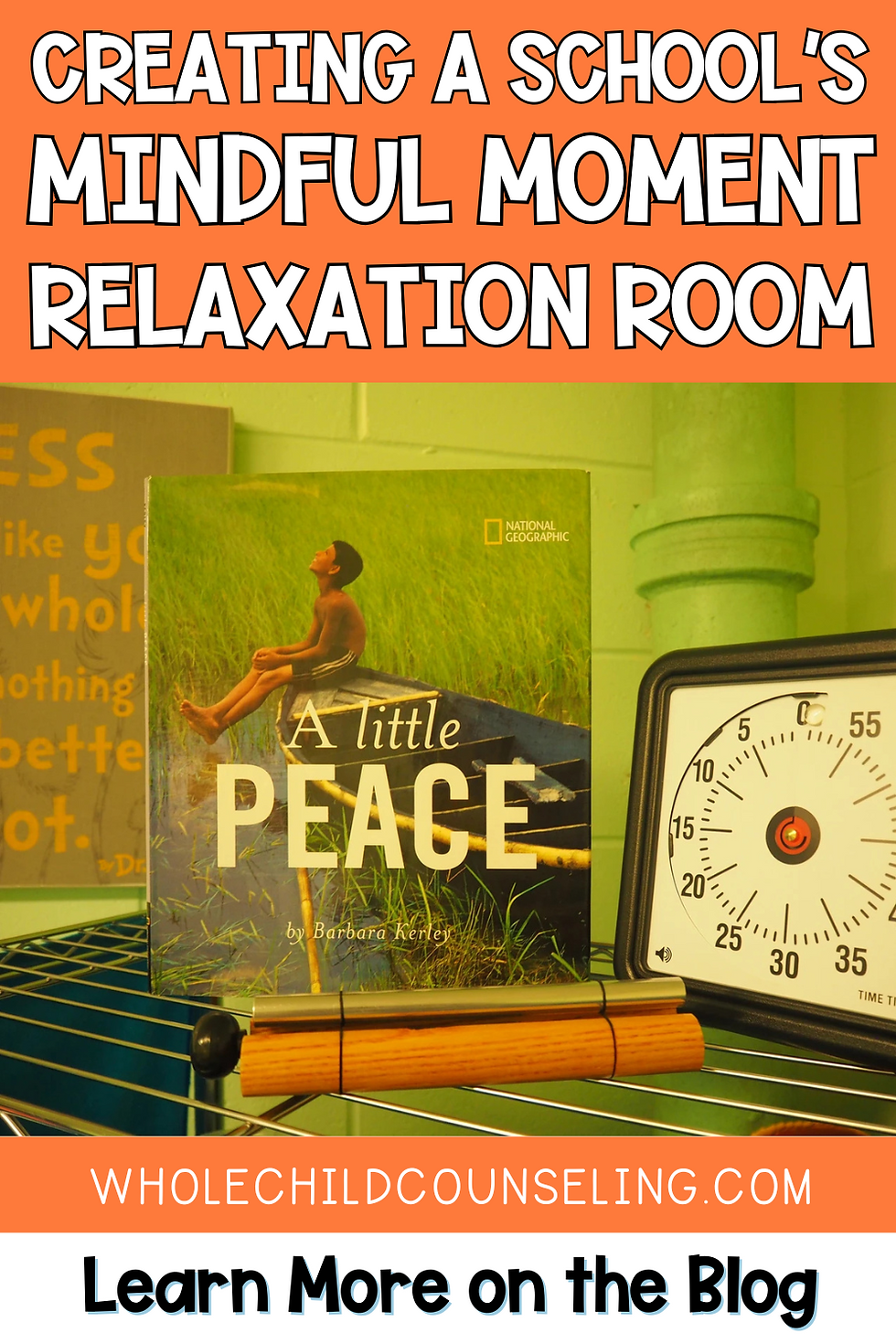
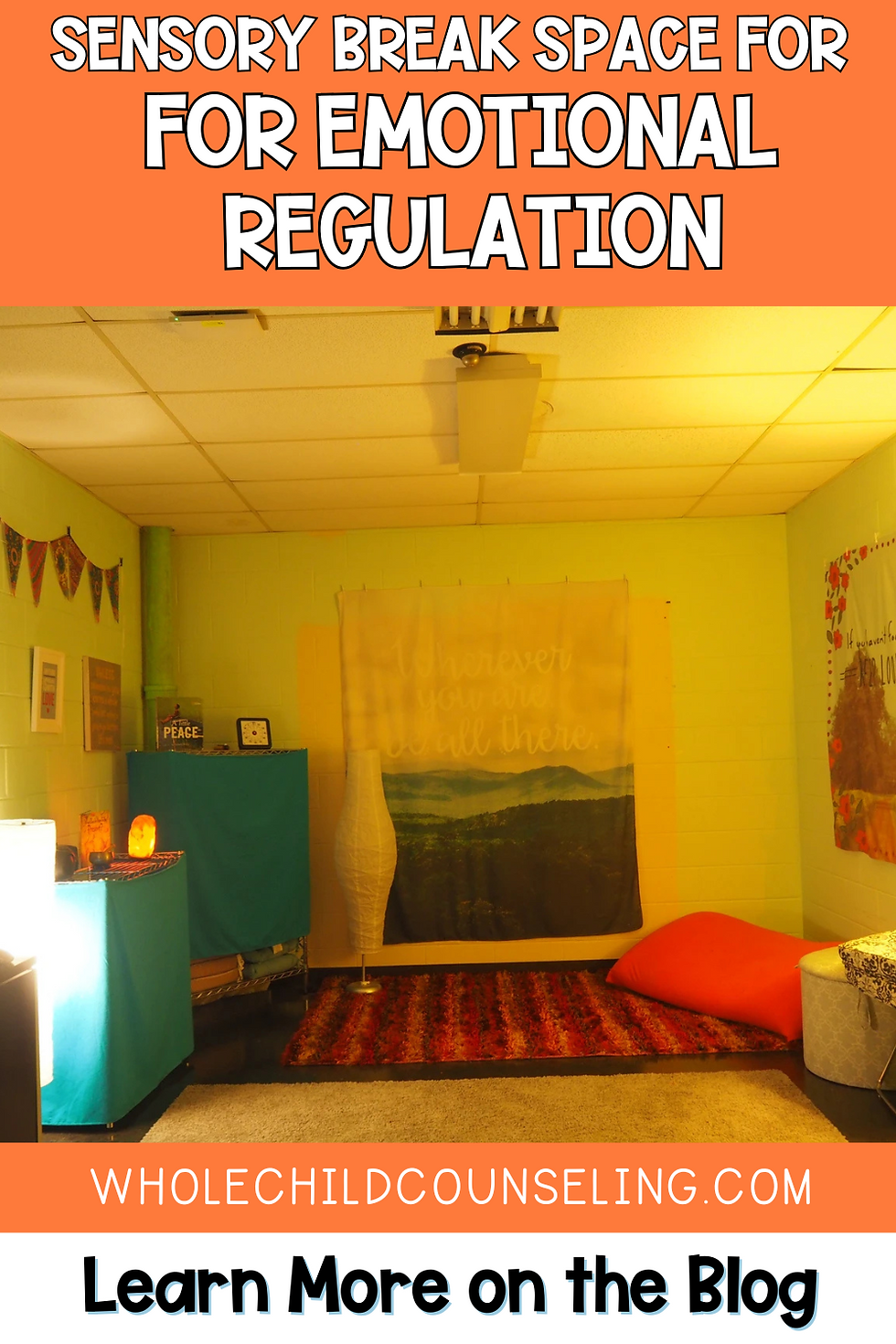
In the Winter 2017 issue of NEA Today Magazine, some of my work was featured in an article entitled This is Your Student's Brain on Trauma. I received a lot of questions about building a Mindful Moment Room since then. Some counselors in and out of my district visited my space for inspiration. I am very lucky to work in a district that is very supportive of my ideas on ways to help enhance social-emotional learning. Since building my first Mindful Moment Room, I have built another one in a new school, and other counselors have created similar spaces across my district. If you have a space in your school, please comment below with what you call your room! I have heard names such as Zen Den, Relaxation Room, Contemplation Corner, Calming Room and a Regulation Room.
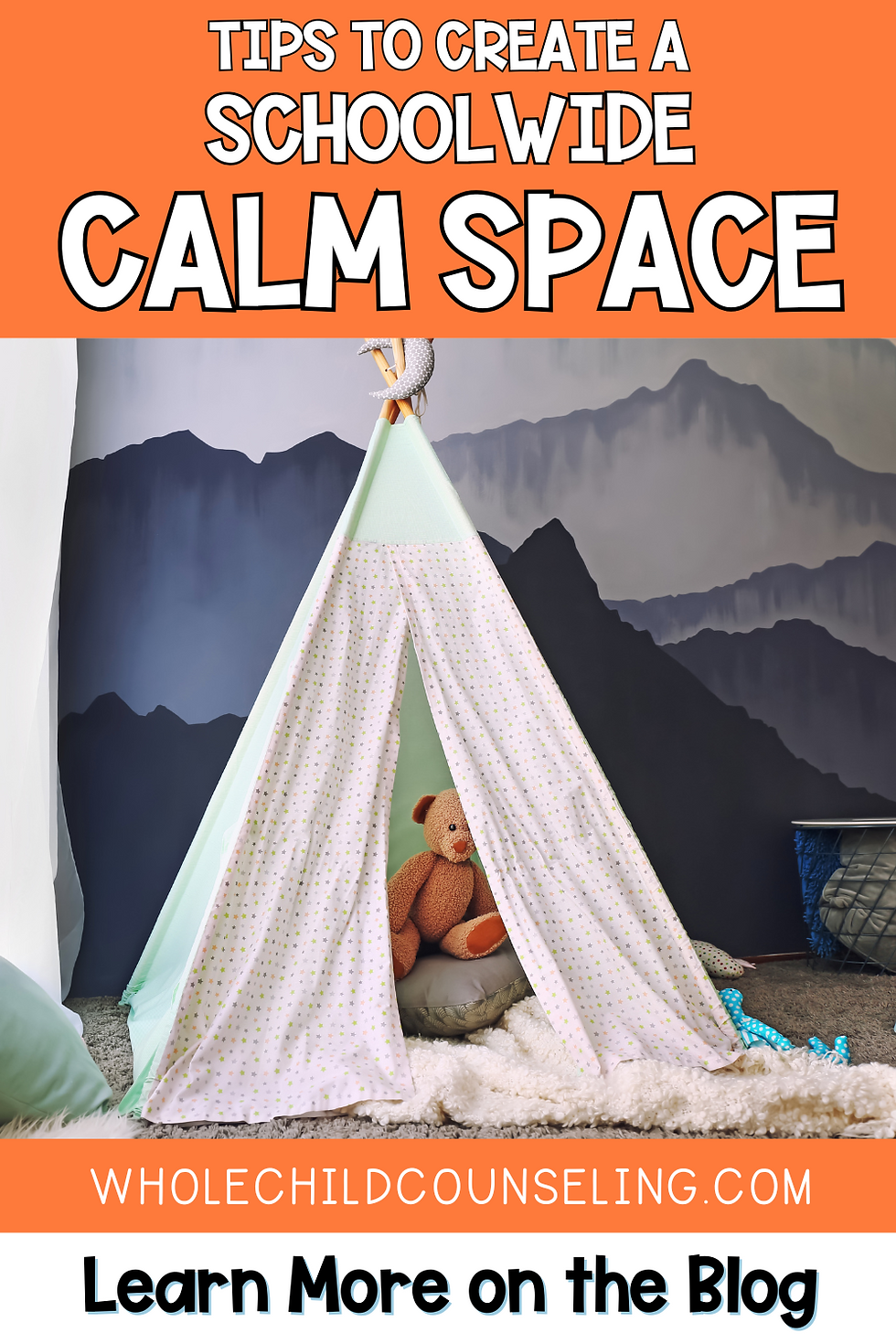
If you are able to create a relaxation space in your setting, it can be beneficial and useful to the people you work with. If you can’t make a dedicated space, my biggest suggestion to create a calming atmosphere is to use calming music or nature sounds, and use soft lamps instead of the bright overhead fluorescent lighting. For example, if you are trying to create a calm vibe in a whole class setting, you can achieve this atmosphere by shutting off a couple of the light switches or closing the blinds and streaming some calming tunes. I love this Peaceful Piano playlist or something from the Calming Music Academy or Enya on Spotify.
If you're looking for a classroom calm corner for a smaller space, be sure to check out this blog post.
The Mindful Moment room is a serene, tranquil room where children who are feeling emotionally dysregulated can go to calm themselves down. The room has been well-received by children, teachers and parents. A second grader who takes breaks in the room suggested we rename it “The Wonderful Room.” Children often ask if this is where the counselors live and sleep, because the space is so calming.
The room is decorated with soft lighting, rugs, nature tapestries and comfortable, flexible seating options such as a couch, cushions, chairs and a bean bag. There is a noise machine that plays nature sounds and a CD player with calming music or guided relaxation CD’s available. There is a gentle stretching corner with yoga mats and a shelf that holds cushions for the children to sit on in a group setting.

The School Adjustment Counselors run groups in the room and interns also work with children in the room. The children can use this room for sensory or motor breaks. They sign into the room, set a visual timer to start their break and then choose some sensory tools from a box, which have picture labels on them. There are cards available with suggested skills the children can use. Children may also earn time to use the room an incentive, or use the space while participating in a mediation or as a place to complete a Behavior Reflection Sheet.

If you are thinking about building a Mindful Moment room, I would start by locating a space and then obtaining administrator permission. Your next step is to write a wish-list. Before you purchase anything, I would share your wish-list with your staff, family and friends. Many people have these items lying around and they are often more than happy to donate them! Before accepting donations, you want to make sure they come from a clean and pet/smoke free home, due to allergens. If needed, after receiving donations, you can then start fundraising for your room by writing letters to companies, using Donor’s Choose, running spirit days or contests like selling raffle tickets to win a chance to pie your principal in the face, or taping your favorite teacher to a wall. Below is a list of tips for creating your own Mindful Moment Room, as well as a list of useful materials to have in your space.

Tips for Creating a Mindful Moment Room
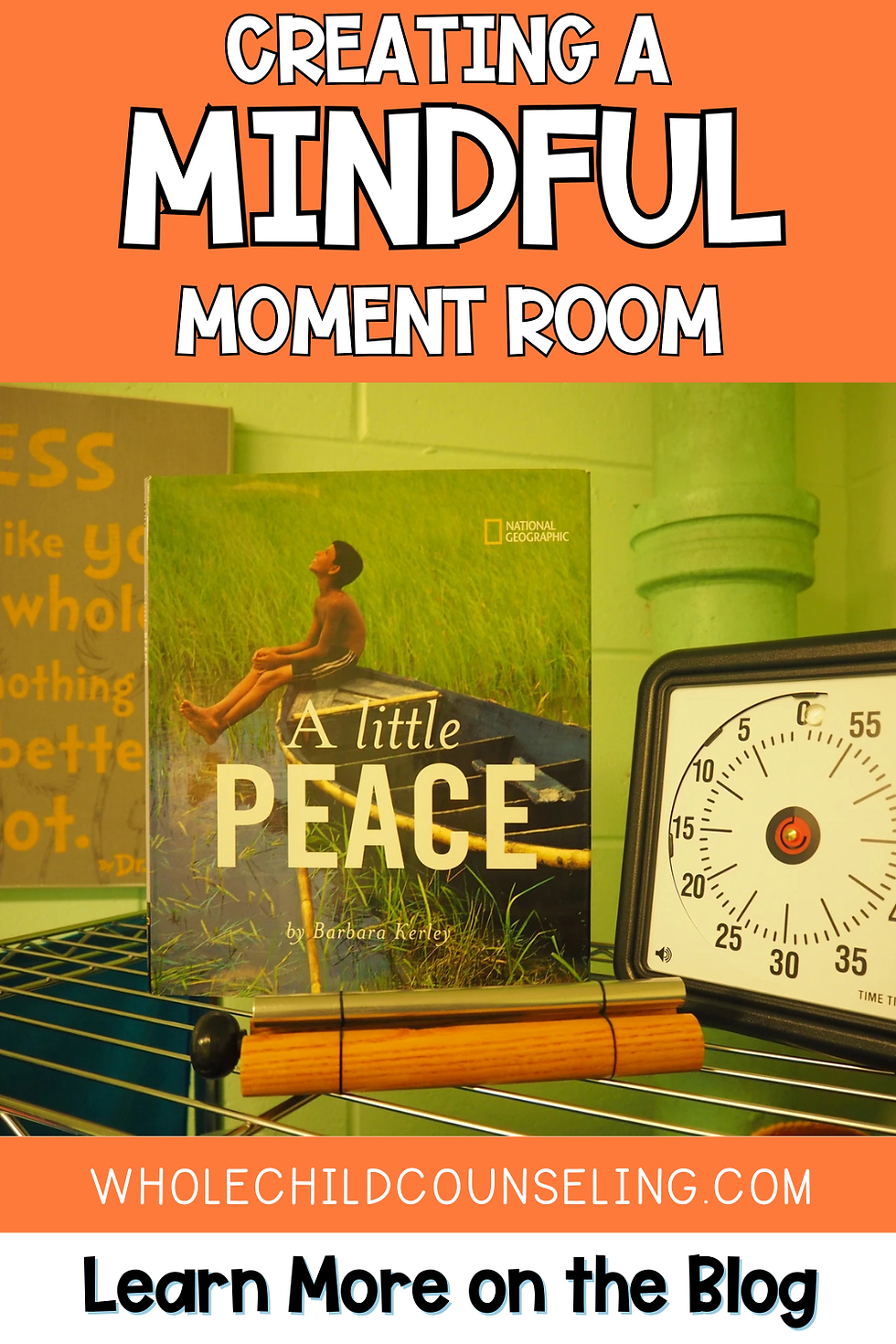
I put all the links in one spot for you here to make it easy for you!
Keep the room simple. You don’t want too much going on. The goal is for the room to be relaxing and not over-stimulating. There shouldn’t be a lot of distractions in the room.
If you have a shelf to store your cushions or sensory or fidget tools, make a curtain to hide what is on the shelf. For smaller shelves, you can use a spring tension rod and place a curtain or fabric over it. If you don’t want to sew, you can use some no-sew iron on tape. For a very large shelf, I sewed a fabric shower curtain to match the size of the shelf and used Velcro to hold the curtain up along the top of the shelf.
Have children’s books on relaxation and I-Spy books available in the room. To keep it simple, don’t place too many books or materials out at once. Only display a few books out on a shelf at a time and rotate them periodically to keep it interesting and engaging for the children.
If you have yoga mats, you can neatly roll and store them in a nice laundry basket.
If it’s possible, do not use overhead fluorescent lighting. Ikea has affordable floor lamps with soft wattage bulbs available.
Hang nature tapestries on the walls.
Consider purchasing an ocean wave projector night light, many of them are affordable and can also be used in place of a sound machine.
If you have a screen or projector available to you, this would be a great tool to show calming videos on.
If there are many windows in the room that cause a lot of light to filter in, consider adding shades, curtains or window privacy film.
If you have a bulletin board in the space, you can purchase a roll of fadeless paper that comes in a calming ocean print.
Don’t let the children use the space if they are being unsafe or out of control of their bodies. Once they calm themselves down they can then use the space.
You can purchase heavy-duty seasonal patio cushions, off-season and use them as floor cushions.
Establish and teach a structured routine for using the space. Create a visual to match. You need to create a plan and teach the children your expectations for using the space. Letting a child go into a space unstructured and without a plan may unintentionally increase their anxiety. An example of a structure:
Signing into the room
Feelings check
Setting the visual timer
Choosing a skill or tool to use
Cleaning up
Doing another feelings check
Returning to class
Use a clipboard with a sign-in sheet to collect data on usage.
Have art and coloring materials available such as blank paper, coloring books, colored pencils, markers, crayons and oil pastels.
I am a certified aromatherapist and I absolutely LOVE essential oils. I use them all the time in my own home. However, I would not recommend diffusing essential oils in a school setting. It is my opinion that there are too many liabilities involved. You would need to ensure none of the children have allergies and you would need to be trained in the use of oils that were safe for children, in addition to obtaining administrative and parental consent.
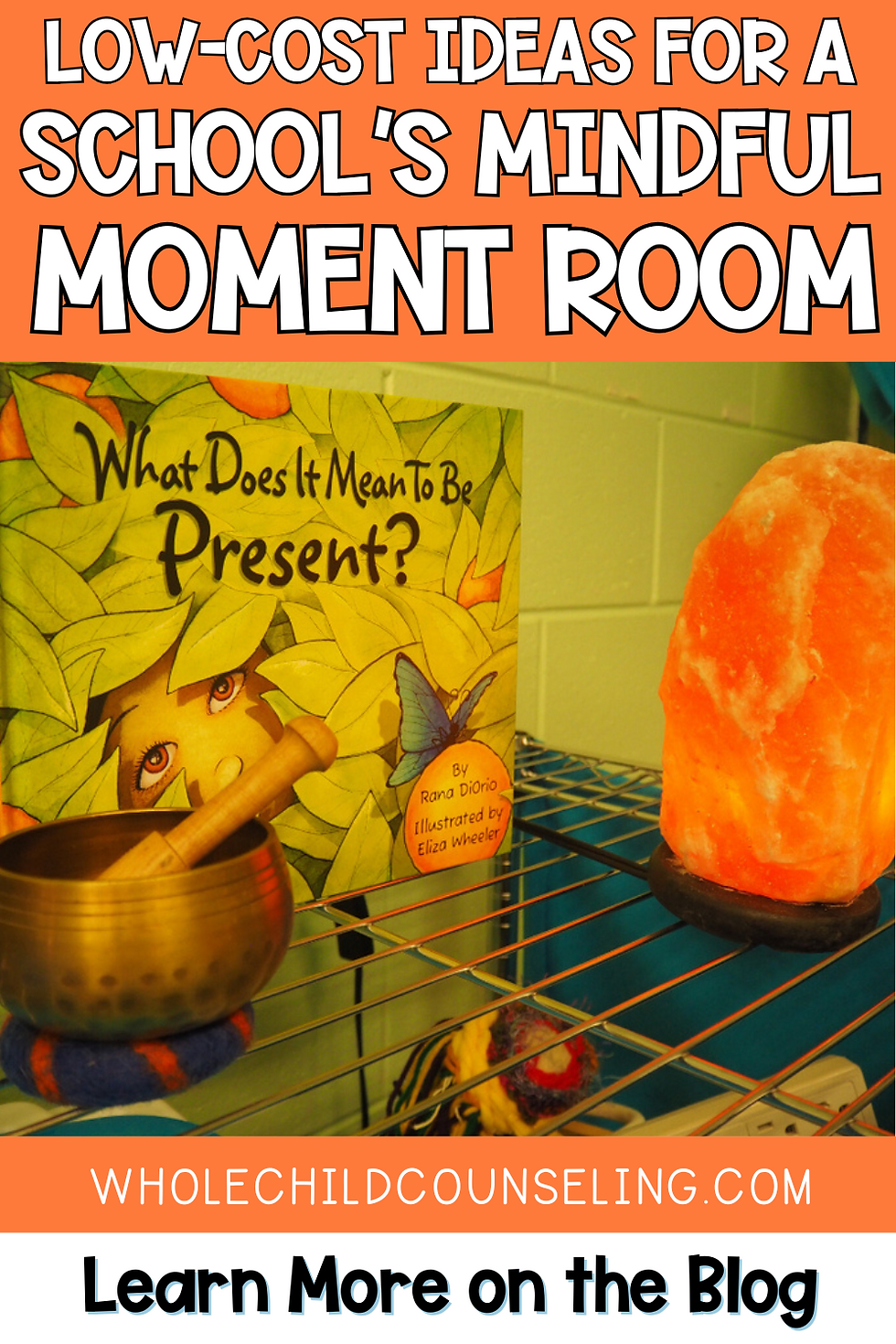
Mindful Moment Room Supplies
STRUCTURE: Clipboard for a sign in, visual timer, visual skills cards, visual routine checklist, posted expectations
SPACE: rugs, nature tapestries for walls, shelves with curtains
LIGHTS: Soft lighting from floor lamps and a Himalayan salt lamp
SEATS: Comfortable, flexible seating options such as a couch, bean bags, chairs or cushions
SOUNDS: A bell or chime, a noise machine that plays nature sounds, a CD player with calming music or guided relaxation CD’s or an ocean wave projector night light
MOVEMENT: Yoga mats rolled up in a nice laundry basket with kids yoga books, posters or cards or games such as ThinkFun Yoga Spinner Game or Yogarilla Exercise & Activity Game.
ART: Blank paper, coloring books, colored pencils, markers, crayons and oil pastels
BOOKS: Children’s books on relaxation and I-Spy books
FIDGETS OR SENSORY TOOLS: Tangle Jr, Magic Ruler, Maze Cube or Ball, Rubik's Cube, Water Oil Toy, Stretchy String, reversible mermaid sequin pillows or a weighted lap pad (you may need to check in with an occupational therapist before using, depending on policies where you work)
BREATHING TOOLS: Hoberman sphere, bubbles, pin wheel, stuffed animal, pom poms and feathers (to blow around) and visual skills cards
My newest calming tool is this amazing Calm Magic 8 Ball! Kids love the surprise of shaking it and getting a calming strategy they can try right away. It makes review time fun and interactive while also building self-regulation skills.

Sensory and fidget tools are organized in boxes on the shelf, with visual labels.

Shelf with curtain lifted up to show cushions and art supplies.bbOn top of shelf is a visual timer, a chime and a picture book called bA Little Peace by Barbara Kerley.

Sign up for my email list and access the free SEL resource library!




